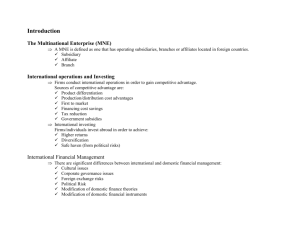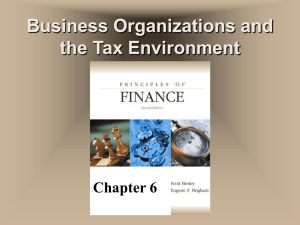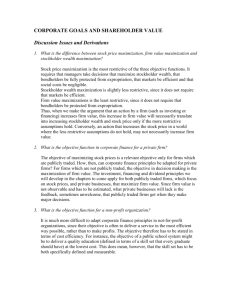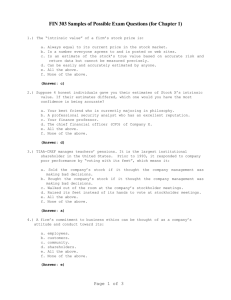Goals of the firms - International Business Program
advertisement
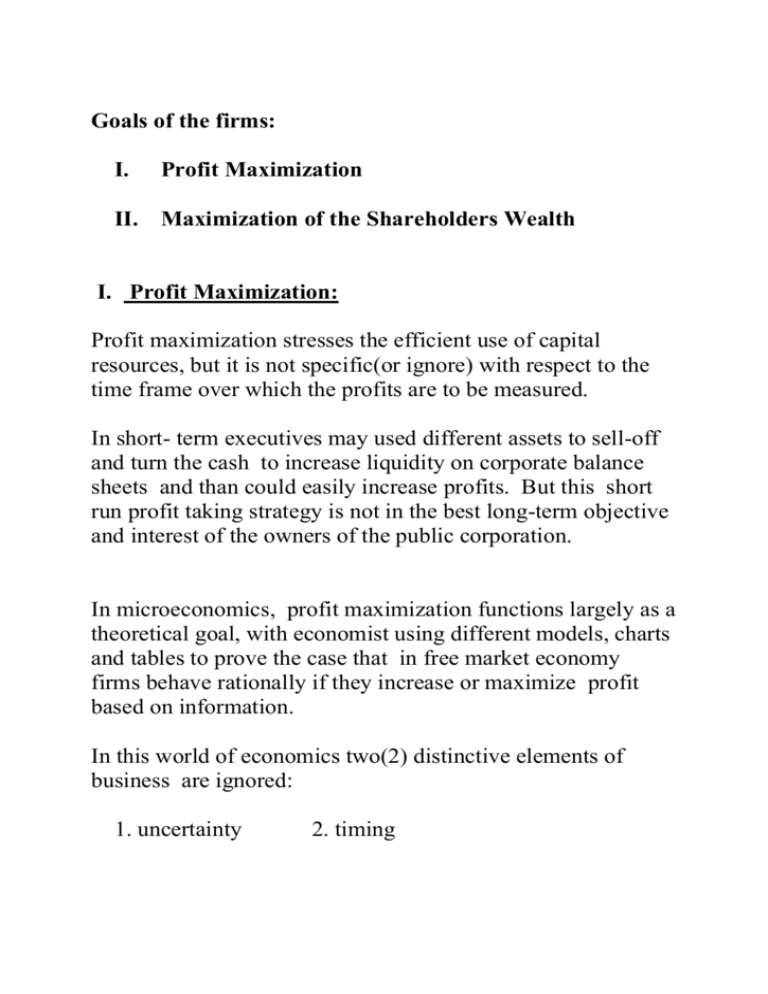
Goals of the firms: I. Profit Maximization II. Maximization of the Shareholders Wealth I. Profit Maximization: Profit maximization stresses the efficient use of capital resources, but it is not specific(or ignore) with respect to the time frame over which the profits are to be measured. In short- term executives may used different assets to sell-off and turn the cash to increase liquidity on corporate balance sheets and than could easily increase profits. But this short run profit taking strategy is not in the best long-term objective and interest of the owners of the public corporation. In microeconomics, profit maximization functions largely as a theoretical goal, with economist using different models, charts and tables to prove the case that in free market economy firms behave rationally if they increase or maximize profit based on information. In this world of economics two(2) distinctive elements of business are ignored: 1. uncertainty 2. timing In reality, different investment projects differ a great deal with respect to risk characteristics, and to ignore these differences in the practice of corporate financing can result in poor management decisions. In business life there is a very definite relationship between risk and expected return - that is, private investors demand a higher expected return for taking on the investment projects additional risk. To ignore this relationship leads to improper decision making to allocate the capital which could lead to long-term conflict between existing investors and management. II. Maximization of Shareholders Wealth means maximization of the market value of the existing shareholders common stock price – because the effects of all financial decisions are included. I. II. Private Investors react to poor investment or dividend decisions by selling stocks and causing the total market value of the public shares to fall. Investors can react to good decisions by pushing up the price of stocks and create wealth for the shareholder. If the owners of the corporation are to base financial decisions on a single goal, that goal must be precise, not allow for misinterpretation, and deal with all the complexities of the real business world, including but not limited to: 1. legal issues 2. environmental standards 3. ethical and cultural considerations 4. international dimensions 5. labor demand and rights 6. tax The market price of the public corporation reflects the value of the public corporations seen by its owners (investors = shareholders = equity holders) and takes into account the complexity and complications of the real-business risks. The unifying objective in corporate finance is to maximize the share value of the public firm. Investment projects, financing structure and dividend decisions must be directed by management toward share value maximization objective. The objective is narrowed from maximizing firm value to maximizing stockholder value or stockholder wealth. How do we measure stockholder wealth? 1. In a publicly traded company, the stock price is an observable and real measure of stockholder wealth 2. The objective of maximizing stockholder wealth can be narrowed to maximizing stock price 3. The stock price possess unique value of measuring stockholder wealth at any time, not limited to corporate annual report or financial reports. Why private investors focuses on Stock Price Maximization: 1. The stock prices are the most observable of all measures that can be used to judge the performance of the publicly traded corporation. 2. The stock price, in a market with rational investors, reflects the long-term effects of the firm’s decisions 3. The stock price is a real measure of stockholders wealth, since the stockholders can sell stock and receive the price now. Two mechanisms designed to provide power to stockholders: I. The Annual Meeting, where the shareholders of publicly traded firms are called to gather once every year at annual meeting and decide directly on selection of the board of directors The shareholders who cannot attend the meeting can still exercise their voting power by filling out a proxy. A Proxy enables shareholders to vote in absentia for boards of directors and resolution that will coming to a vote at the shareholders meeting. II. The Boards of Directors is the body that oversees the management of a public corporation. The Board of Directors as elected representatives of the shareholders, the directors are obligated to ensure that managers are looking out for stockholders interests. They have the power to change the top management of the firm and have a substantial influence on how the corporation is run and how the dividends are distributed.


